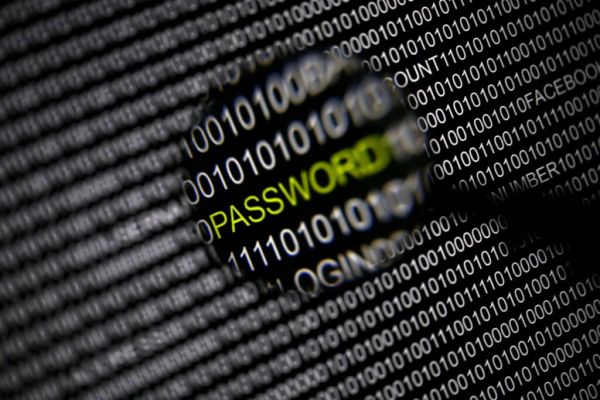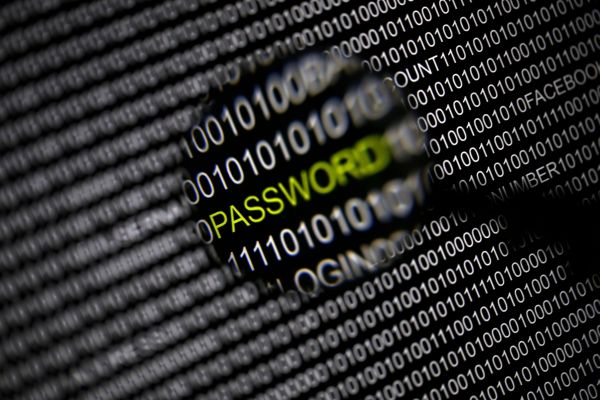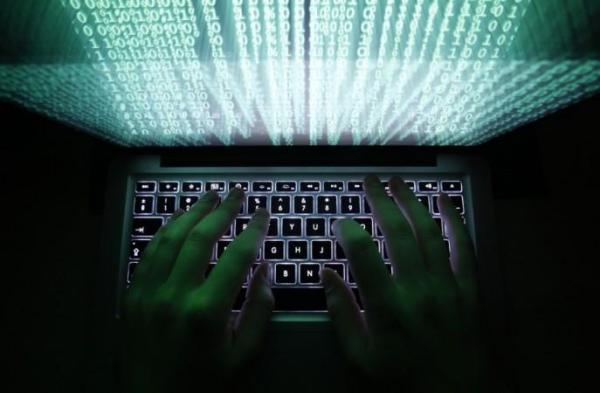

In the annals of cybersecurity, few events have shaken the foundations of digital trust as profoundly as the discovery of the so-called “Mother of All Breaches.” This unprecedented incident, uncovered by dedicated researchers, revealed a database containing over 16 billion unique credentials usernames and passwords amassed from a mosaic of infostealer malware campaigns, public leaks, and dark web exchanges.
In June 2025, cybersecurity researchers at Cybernews uncovered and reported this massive leak. This unprecedented exposure includes usernames and passwords for critical platforms such as Google, Apple, Facebook, GitHub, Telegram, VPN services, developer portals, corporate networks, and some very important government systems. Experts warn that this breach gives cybercriminals “unprecedented access” to both personal and institutional accounts, posing immediate and severe risks of identity theft, account takeover, and systemic disruption across commercial and governmental digital infrastructure, especially in the evolving high intensity conflicts across the world.
As Vilius Petkauskas of Cybernews observed, “This is not just a leak it’s a blueprint for mass exploitation.” The sheer scale and structure of this data set have redefined what is possible for attackers, making the threat immediate and universal.
The Machinery of Aggregation: How the Digital Underworld Operates
The creation of this digital arsenal was not the result of a spectacular, headline-grabbing hack, but rather the cumulative effect of relentless, often invisible, infostealer malware activity. Malicious software such as RedLine, Vidar, and Raccoon has infiltrated millions of devices through phishing, malicious downloads, and compromised websites. These programs operate silently, harvesting not only credentials but also cookies, authentication tokens, and metadata. Security expert Bob Diachenko explained, “There was no single point of failure here. This is the sum of years of infostealer logs and public leaks, now organized and weaponized by their sheer volume.” The aggregation of both recent and legacy data has created a resource of unparalleled potency for cybercriminals.
The Global Epidemic of Password Reuse
At the heart of the crisis lies the persistent human habit of password reuse. Despite years of warnings, the majority of users continue to recycle passwords across multiple platforms, creating a domino effect when a single credential is compromised. Cybersecurity analyst Troy Hunt, creator of Have I Been Pwned, has long warned, “Password reuse is the Achilles’ heel of digital security. One breach can open the doors to a dozen more.” The automation of credential stuffing attacks has become a favored tactic among cybercriminals, who can now test billions of credentials against countless services with minimal effort. The MOAB’s fresh, highly structured data makes these attacks not only easier but also more devastating, threatening the integrity of personal, corporate, and government systems alike.
Economic Fallout: The Cost of Digital Negligence
The economic repercussions of this breach are already reverberating across industries. Cyber insurers have reported a marked increase in claims, with the average loss per credential-stuffing attack now exceeding a million dollars. The broader impact is even more sobering, as the global cost of cybercrime continues to climb, threatening to surpass previous projections by a significant margin. Sarah Stephens, Chief Cyber Officer at Lloyd’s, remarked, “We are witnessing a new era of cyber risk, where the aggregation of old and new data multiplies the threat exponentially.” The financial sector, in particular, faces heightened scrutiny, as regulators and investors demand greater transparency and resilience in the face of mounting digital threats.
National Security and Critical Infrastructure: The New Frontline
The implications of the breach extend far beyond the corporate world, reaching into the very core of national security and critical infrastructure. A significant portion of the compromised data includes credentials for government portals, VPNs, and industrial control systems. Lydia Mors, former Director of Cyber Policy at NATO, warned, “State-sponsored actors now possess a digital arsenal capable of bypassing traditional defenses and targeting the heart of our infrastructure.” The breach has already been linked to attempted intrusions in sectors such as energy and transportation, underscoring the urgent need for coordinated defense and intelligence sharing at the highest levels.
The Crisis of Confidence: Societal Trust in Jeopardy
Beyond the technical and economic dimensions, the breach has triggered a crisis of confidence among digital citizens. Public trust in digital services a cornerstone of modern economies has been deeply shaken. Dr. Priya Menon, a leading researcher in digital trust, observed, “Trust is the currency of the digital age. Its erosion threatens not just commerce, but the very fabric of digital society.” Surveys indicate that nearly half of consumers are now hesitant to adopt new digital services, citing fears over data security. This hesitancy risks stalling innovation and slowing the adoption of transformative technologies in sectors ranging from healthcare to financial services.

Regulatory Fragmentation: The Achilles’ Heel of Global Defense
Despite the magnitude of the threat, the global regulatory response remains fragmented and inconsistent. While some regions have enacted robust data protection laws, others lag behind, creating a patchwork of standards that cybercriminals exploit with impunity. Jürgen Stock, Secretary General of INTERPOL, has called for urgent international cooperation: “Cybercrime knows no borders. Our response must be equally borderless, harmonizing standards and accelerating intelligence sharing.” The lack of harmonization not only hampers enforcement but also undermines collective resilience, leaving critical sectors dangerously exposed.
The Persistent Human Factor: Training and Vigilance
Even as technology advances, human error continues to be the leading cause of security breaches. Bruce Schneier, renowned security technologist, has stated, “Security is not a product, but a process. It’s about people as much as technology.” While many organizations have adopted multi-factor authentication and other advanced measures, inconsistent enforcement and a lack of comprehensive training leave gaps that attackers are quick to exploit. Social engineering, phishing, and simple negligence remain potent tools in the cybercriminal arsenal, highlighting the need for continuous education and a culture of vigilance.
Technology’s Double-Edged Sword: Innovation and Risk
Emerging technologies offer both hope and new hazards. Artificial intelligence is transforming threat detection, enabling the identification of anomalies and suspicious behaviors with unprecedented speed and accuracy. Yet, adversaries are also leveraging AI to craft more convincing phishing campaigns and develop malware that can adapt in real time. Dr. Ravi Chandra, a global thought leader in cyber resilience, cautioned, “We must innovate faster than the adversary, but never blindly. Every new tool is a potential weapon in the wrong hands.” Quantum computing, while still on the horizon, threatens to upend current encryption standards, while blockchain authentication, though promising, faces its own challenges of scalability and integration.
Prescriptive Pathways: A Blueprint for Global Cyber Resilience
The MOAB breach demands a comprehensive, multi-layered response. Governments must enact and enforce legislation mandating advanced authentication methods, real-time breach disclosure, and robust funding for cyber defense. International bodies such as the G20, INTERPOL, and the United Nations should lead the charge in harmonizing standards and orchestrating joint operations against cybercrime syndicates. Enterprises must transition to zero-trust architectures, enforce universal multi-factor authentication, and conduct regular, independent security audits. Individuals must abandon the habit of password reuse, adopt password managers and passkeys, and remain vigilant against phishing and malware. As Satya Nadella, CEO of Microsoft, has emphasized, “Cybersecurity is the foundation of trust in the digital economy. It is everyone’s responsibility, from the boardroom to the living room.”
Accountability and Transparency: The Bedrock of Digital Trust
Transparency and accountability must underpin every aspect of the digital ecosystem. Organizations should be required to undergo regular, third-party security audits and disclose breaches promptly to all affected stakeholders. Public-private partnerships are essential for sharing threat intelligence and developing best practices. Only through collective vigilance and a culture of accountability can society hope to stay ahead of rapidly evolving threats. As Anne Neuberger, U.S. Deputy National Security Advisor for Cyber and Emerging Technology, has noted, “Cybersecurity is a shared journey. Our resilience depends on openness, collaboration, and a relentless commitment to improvement.”
From Catastrophe to Catalyst
The 16 billion credential breach is not merely a technical incident, but a defining moment for the digital era. It has exposed the vulnerabilities of our interconnected world and the inadequacy of fragmented, reactive defenses. Yet, it also presents a unique opportunity a catalyst for systemic change and a new era of digital trust. By embracing coordinated global action, investing in advanced technologies, harmonizing regulations, and fostering a culture of cyber literacy, we can transform this crisis into a foundation for lasting resilience. The time for complacency is over; the future of the digital world depends on deliberate, collective action. As Lydia Mors succinctly put it, “We must build digital fortresses, not just firewalls.” The challenge is immense, but so too is the opportunity to define the future of digital civilization.
(Major General Dr Dilawar Singh, a Ph.D. with multiple postgraduate degrees, is a seasoned expert with over four decades of experience in military policy formulation and counter-terrorism. He has been the National Director General in the Government of India. With extensive multinational exposure at the policy level, he is the Senior Vice President of the Global Economist Forum, AO, ECOSOC, United Nations. He is serving on numerous corporate boards. He has been regularly contributing deep insights into geostrategy, global economics, military affairs, sports, emerging technologies, and corporate governance.)